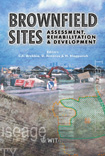Process Of Integrating Screening And Detailed Risk-based Modeling Analyses To Ensure Consistent And Scientifically Defensible Results
Price
Free (open access)
Transaction
Volume
55
Pages
Published
2002
Size
569 kb
Paper DOI
10.2495/BF020091
Copyright
WIT Press
Author(s)
J. W. Buck, J. P. McDonald, & R. Y. Taira
Abstract
Process of integrating screening and detailed risk-based modeling analyses to ensure consistent and scientifically defensible results J.W. Buck, J.P. McDonald, & R.Y. Taira Pacific Northwest National Laboratory, USA Abstract The United States Department of Energy manages several installations with waste sites having a potential to impact human health and the environment. The Hanford Site in south-central Washington state is one such installation. The Hanford Site has over 1,000 wastes site with 177 of them being underground storage tanks containing high-level radioactive waste. To support cleanup and closure of these tanks, modeling is performed to understand and predict potential impacts to human health and the environment. Pacific Northwest National Laboratory developed a screening tool for the United States Department of Energy, Office of River Protection that estimates the long-term human health risk, from a strategic planning perspective, posed by potential tank releases to the environment. This tool is being conditioned to more detailed model analyses to ensure consistency between studies and to provide scientific defensibility. Once the conditioning is complete, the system will be used to screen alternative cleanup and closure strategies. The integration of screening and detailed models provides consistent analyses, efficiencies in resources, and positive feedback between the various modeling groups. This approach of conditioning a screening methodology to more detailed analyses provides decision-makers with timely and defensible information and increases confidence in the results on the part of clients, regulators, and stakeholders.
Keywords




